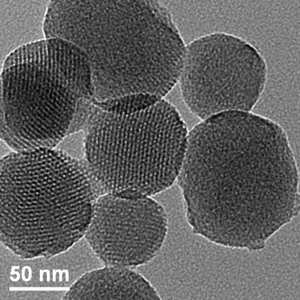
“Cornell Dots” — brightly glowing nanoparticles — may soon be used to light up cancer cells to aid in diagnosing and treating cancer.
The U.S. Food and Drug Administration (FDA) has approved the first clinical trial in humans of the new technology. It is the first time the FDA has approved using an inorganic material in the same fashion as a drug in humans.
“The FDA approval finally puts a federal approval stamp on all the assumptions we have been working under for years. This is really, really nice,” said Ulrich Wiesner, the Spencer T. Olin Professor of Materials Science and Engineering, who has devoted eight years of research to developing the nanoparticles. “Cancer is a terrible disease, and my family has a long history of it. I, thus, have a particular personal motivation to work in this area.”
The trial with five melanoma patients at Memorial Sloan-Kettering Cancer Center (MSKCC) in New York City will seek to verify that the dots, also known as C dots, are safe and effective in humans, and to provide data to guide future applications. “This is the first product of its kind. We want to make sure it does what we expect it to do,” said Michelle Bradbury, M.D., radiologist at MSKCC and assistant professor of radiology at Weill Cornell Medical College.
C dots are silica spheres less than 8 nanometers in diameter that enclose several dye molecules. (A nanometer is one-billionth of a meter, about the length of three atoms in a row.) The silica shell, essentially glass, is chemically inert and small enough to pass through the body and out in the urine. For clinical applications, the dots are coated with polyethylene glycol so the body will not recognize them as foreign substances.









